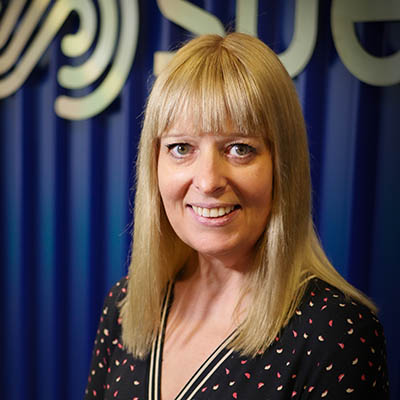Facing home truths – employers’ defining moment

We must hope that some good comes from the coronavirus pandemic, after all the loss, sacrifice and stress. One positive that businesses and employers can take from the crisis is the value of agility and resilience.
In little more than 24 hours, more than 900 of our SUEZ recycling and recovery UK people began working remotely as the lockdown loomed. Facilitating that transition required an immense effort in very short order, but we had the infrastructure already in place to support this new way of working. As well as video conferencing software, our IT system allowed remote access instantly and securely to all the apps, files and desktops that we need to do our jobs.
When we made that IT investment to facilitate agile working, some may have doubted its value. And in practice, before the pandemic, it was not used to its full functionality by any means. Now it’s the backbone supporting our communications, procedures and work processes across the business.
So in reality, the tech was ready for the switch; however, our people aren’t robots and human beings need support to transition. So we created guidance to managers and individuals as they rapidly adapted to the new ways of working.
In our industry, as in many others, managers have built their careers literally by ‘overseeing’ the work of their teams. Now their people, often in roles previously never considered suitable for remote working, are operating from their homes. Their world of work hasn’t ended, it’s changed, and it requires a new managerial mindset.
Likewise, for each individual, the challenge now is not so much about their work/life balance as work/life blend. Meetings, deadlines, meals, schooling, colleagues, kids … these daily demands are now happening in the same space and time.
Our guidance to employees offers advice on managing those demands, while being productive and looking after their wellbeing.
Creating a workspace at home sets boundaries. This sense of a separation from living space helps us get into the right frame of mind for work – and to switch off for breaks and at the end of the day. With physical health in mind, our guidance for home workers also includes tips on setting up a workstation so as to avoid back and eye strain.
As is now widely recognised, going to this designated workspace and getting into a routine that emulates the usual work pattern also help to structure the day. Setting the alarm and getting dressed (notwithstanding the boom in sales of lounge wear) do make a difference to your mindset, as science has shown1.
Planning your daily schedule with a to-do list and short-term goals to review as the day unfolds also helps maintain your focus and pre-empt procrastination.
The opposite danger – especially where interruptions by colleagues have not been replaced by domestic distractions – is becoming totally immersed in work. Taking regular breaks is important for productivity and essential to avoid burn-out.
We encourage our staff to have their lunch away from their new workspace and to get some fresh air and exercise, where possible. Appreciating that the work day may need to be interspersed with childcare or home-schooling, we encourage our people to, set up their ‘out of office’ auto-reply so that they can accommodate this within your schedule whilst letting their colleagues know when they are/aren’t available.
As HR professionals and managers, we always need to remind ourselves that each of us is different, and some find homeworking more challenging than others. So we advise our managers and team members to make the effort to stay connected.
Many miss the face-to-face aspect when interactions with colleagues have shifted to telephone or email so we encourage video meetings. Being able to see each other can make calls more engaging and meetings easier to manage.
We also need to bear in mind that, especially after back-to-back video meet-ups, some people feel more drained. This may be down to missing the normal body language or ‘energy’ in the room, and having to concentrate harder on what’s being said over iffy Wi-Fi.
It’s not just about connectivity – the quality of the connection we feel is all-important. Managers should set a time to check in with their people to maintain communication as well as to keep projects moving forward and workflows on track. But we also urge them to make time for social conversations and asking about how people are outside of work.
We must maintain that rapport and team spirit while reducing feelings of isolation. Central to this effort are our weekly themed Wellness for All webinars – open to all staff working from home and on furlough – and mental health awareness training, which has also now moved online (as described in my previous blog).
There can be little doubt that this new lived experience of our managers and people will yield both benefits and disbenefits – in terms of work/life balance, mental health, productivity, and costs, to name just a few areas. It’s more than likely that working patterns will be more flexible after the pandemic than they were before. But it’s too early to evaluate the true impact.
The crux for now is that this remains a defining moment for all employers. At SUEZ UK, we cannot afford to jeopardise the high levels of staff engagement we have nurtured over the years. For many, this ‘moment’ may seem more like a marathon. As managers we must continue to prioritise the wellbeing of our people and support them by encouraging continued collaboration, communication and compassion.
Reference:
